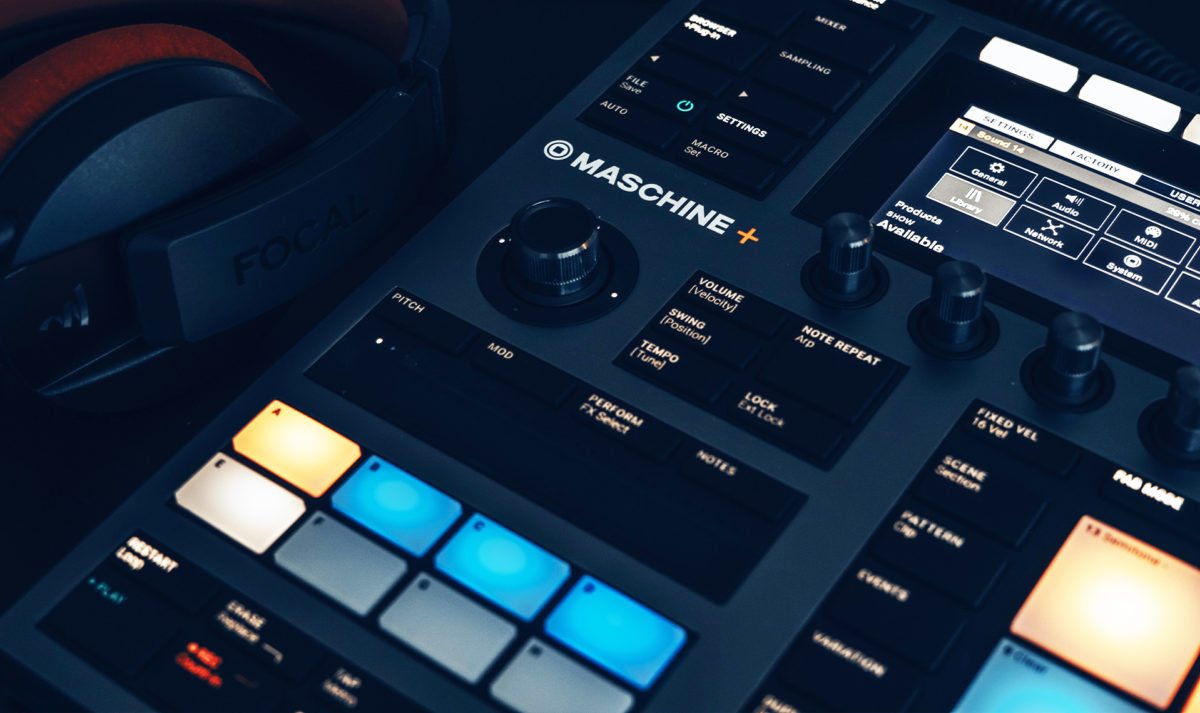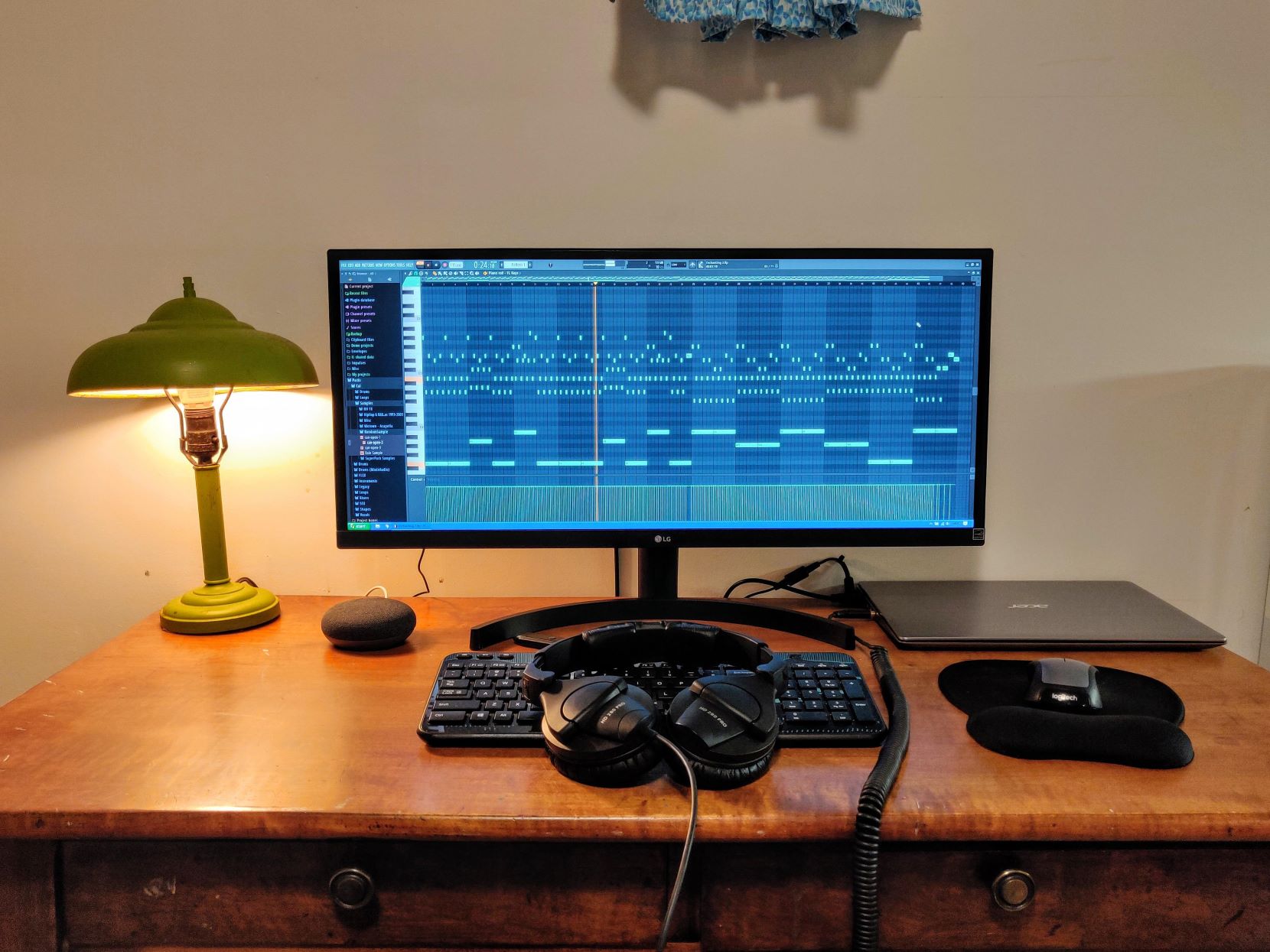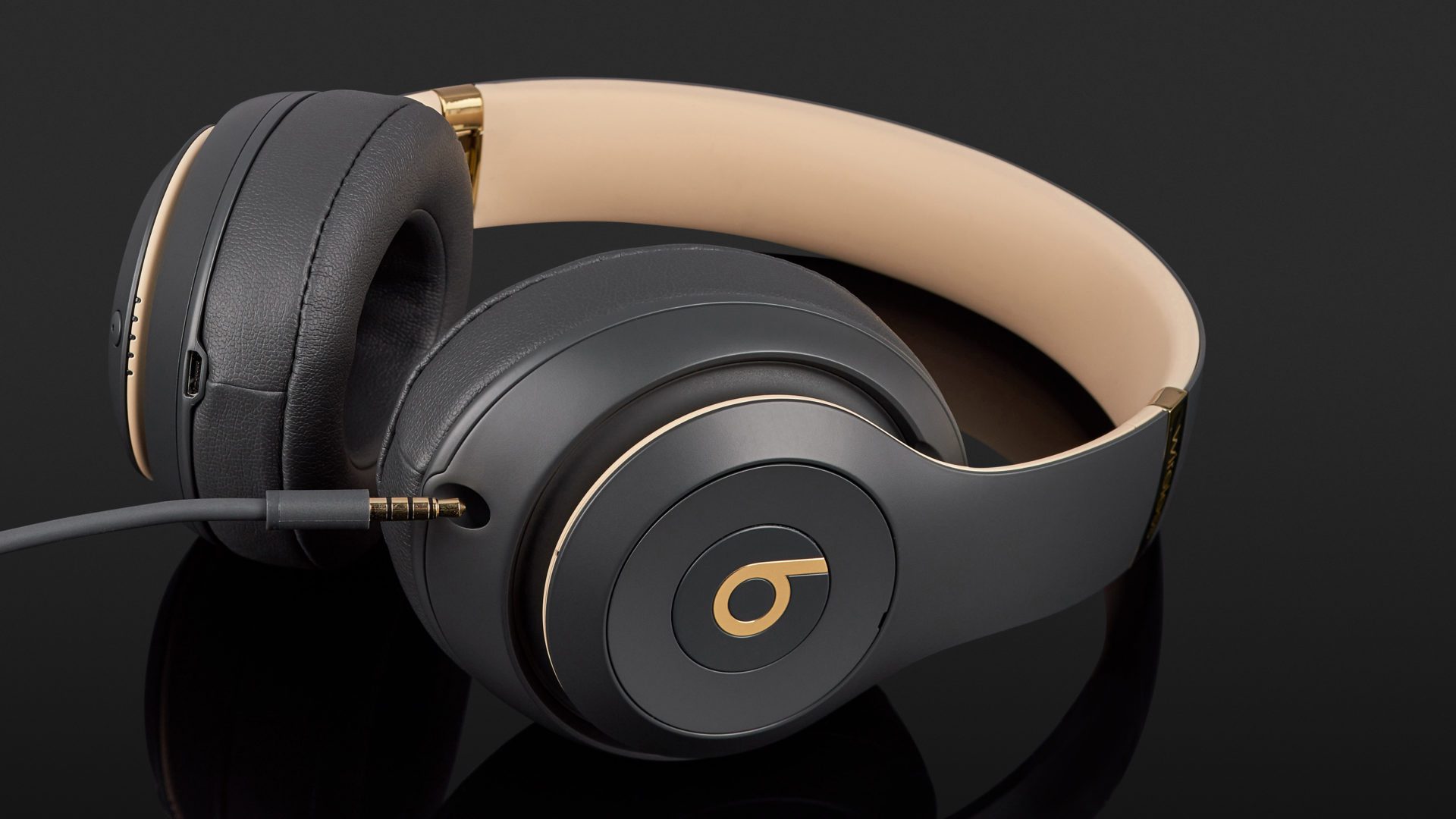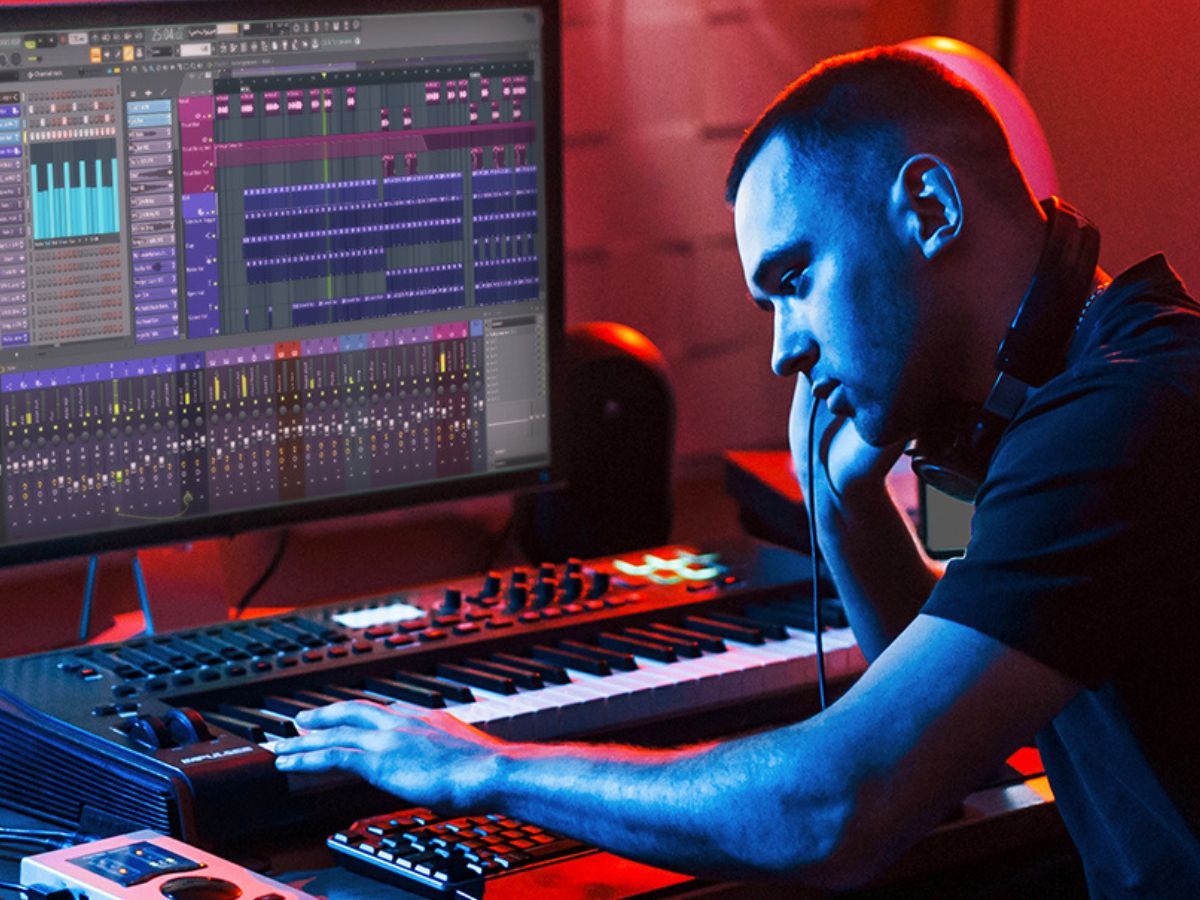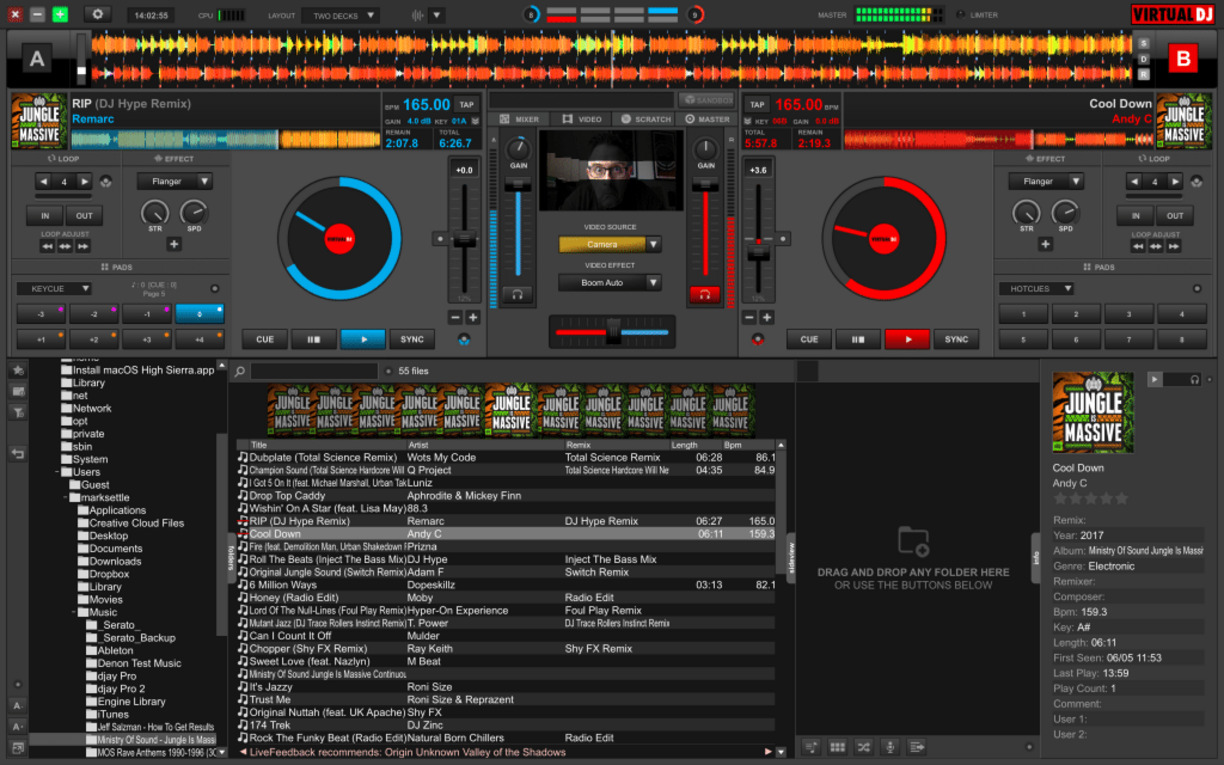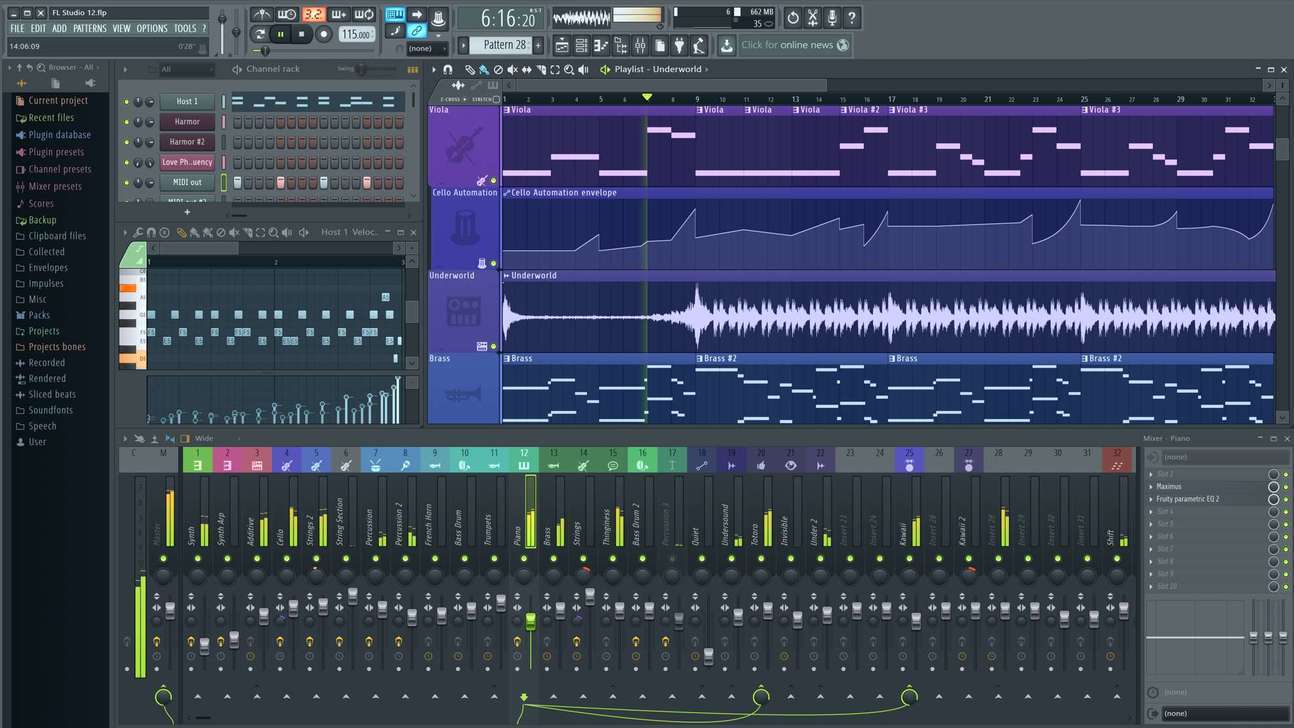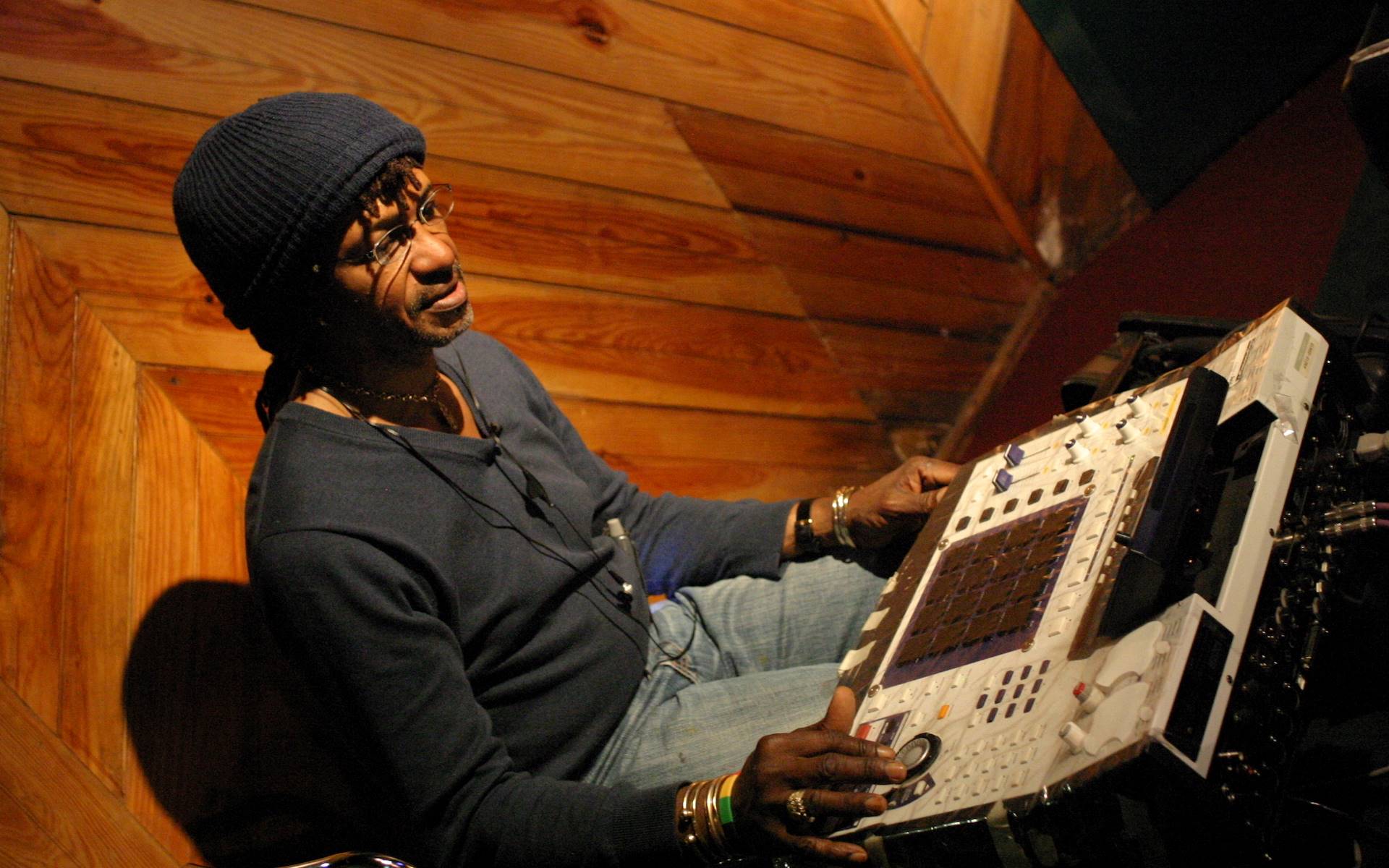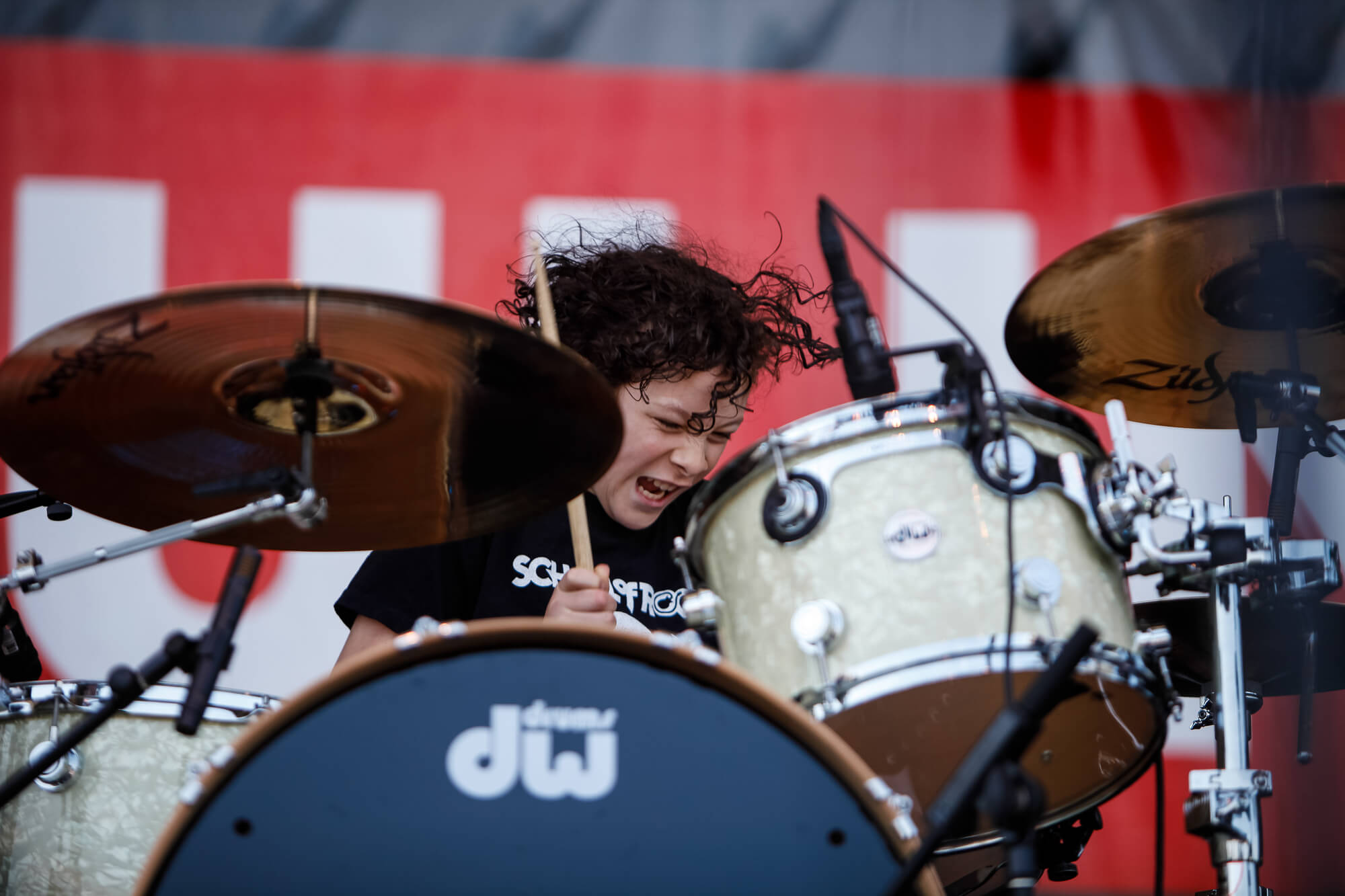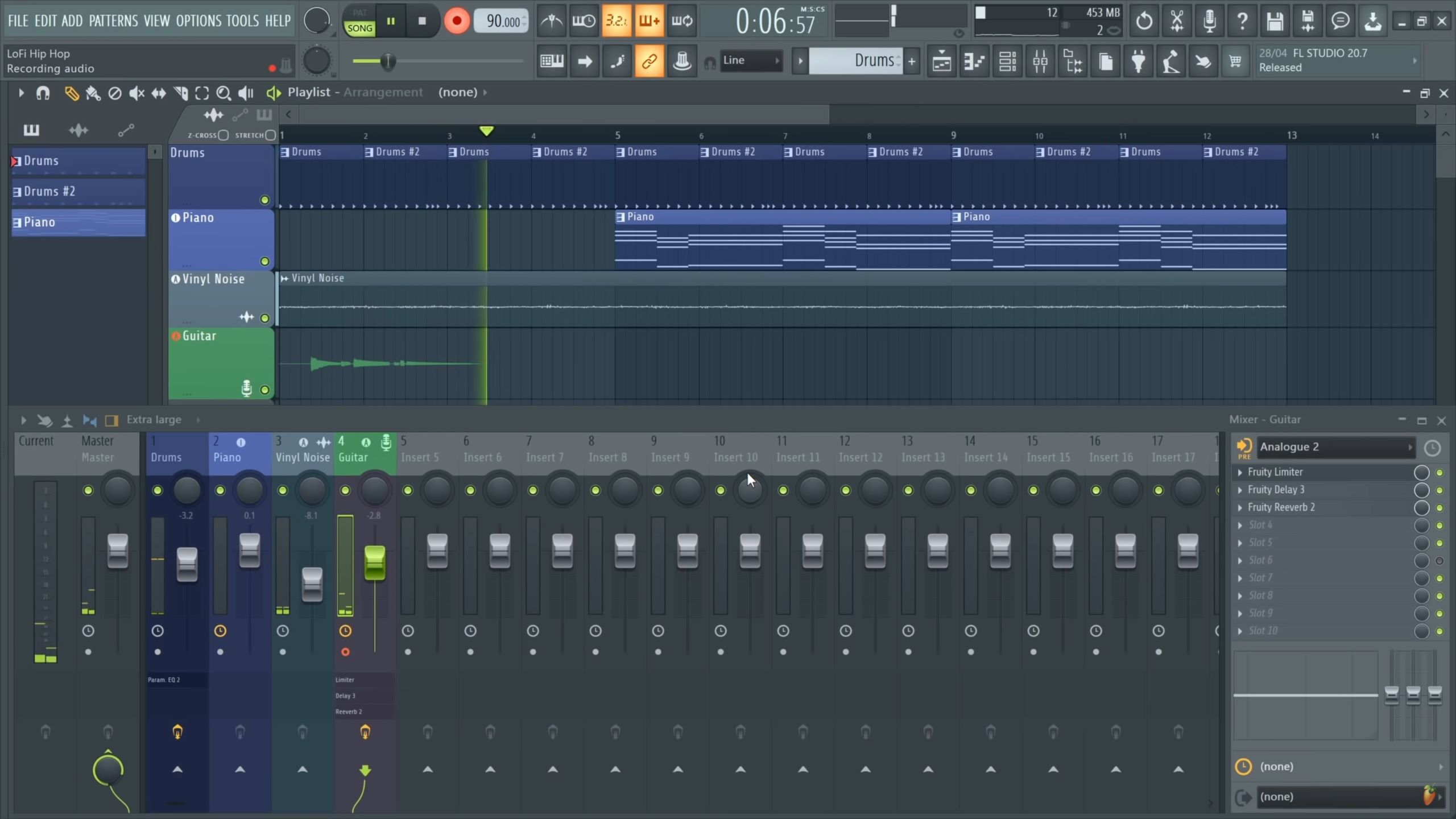

Reggae
How To Make A Reggae Beat
Modified: February 15, 2024
Learn how to create an irresistible reggae beat with our step-by-step tutorial. Master the art of Reggae music production and start grooving today!
(Many of the links in this article redirect to a specific reviewed product. Your purchase of these products through affiliate links helps to generate commission for AudioLover.com, at no extra cost. Learn more)
Table of Contents
Introduction
Welcome to the world of reggae music, where the rhythms are infectious and the vibes are irie. Rooted in the island of Jamaica, reggae is a genre that has captivated audiences worldwide with its soulful melodies and messages of love, unity, and social justice. From the iconic beats of Bob Marley to the smooth grooves of Toots and the Maytals, reggae has earned its place in music history.
In this article, we will delve into the art of creating a reggae beat. Whether you’re a musician, producer, or simply a music enthusiast, understanding the elements that make up a reggae rhythm is essential to appreciating and creating this distinct sound. From the rhythmic backbone of the bass and drums to the melodic guitar riffs and the cheerful sound of the keyboard, we’ll explore how these components come together to form the foundation of a reggae track.
Additionally, we’ll dive into the world of percussion and how it adds depth and flavor to the beat. We’ll also explore the concept of dub effects, a technique synonymous with reggae music, which involves manipulating and manipulating the sound during the mixing process to create a unique atmosphere.
Whether you’re a beginner looking to learn the basics or an experienced musician looking for new insights, this article aims to provide you with a comprehensive guide to creating your very own reggae beat. So put on your headphones, turn up the bass, and let’s dive into the world of reggae rhythm!
Understanding Reggae Music
Reggae music is more than just a genre; it is a cultural phenomenon that encompasses the rich history, traditions, and social movements of Jamaica. Originating in the 1960s, reggae was born out of the fusion of various genres such as ska, rocksteady, and mento. It quickly gained popularity not only within Jamaica but also around the world.
At the heart of reggae music is its distinctive rhythm, characterized by a syncopated offbeat known as the “skank.” This rhythmic pattern created by emphasizing the second and fourth beats of a measure gives reggae its infectious and laid-back feel. It is this groove that has made reggae music so influential, with its unmistakable sound permeating various musical genres.
In addition to its rhythmic characteristics, reggae music is renowned for its meaningful lyrics and powerful messages. Many reggae songs tackle social and political issues, addressing themes of oppression, inequality, and the quest for freedom. These lyrics often serve as a voice for the marginalized and give a platform for social commentary and activism.
Reggae is also known for its improvisational nature, allowing musicians to express themselves freely through improvisation and experimentation. This aspect of the genre has given rise to countless subgenres and variations, ranging from roots reggae to dancehall and dub.
Furthermore, reggae is deeply rooted in the spiritual and cultural traditions of Jamaica. Rastafarianism, a religious and social movement, has played a significant role in shaping the beliefs and values associated with reggae music. The Rastafarian philosophy of peace, love, and equality is often reflected in the lyrics and themes explored in reggae songs.
Overall, understanding reggae music goes beyond recognizing its rhythms and melodies. It is about appreciating the cultural, social, and historical context from which it emerged. By delving into the roots of reggae and its diverse influences, we can truly grasp the essence of this genre and the impact it has had on the world of music.
Elements of a Reggae Beat
A reggae beat is comprised of several key elements that work together harmoniously to create its distinctive sound. Understanding these components is essential to crafting an authentic and captivating reggae rhythm.
1. Bassline: The bass guitar is a crucial element in reggae music. It provides the deep, rumbling foundation that drives the groove. Typically played with a steady rhythm, the bassline in reggae often incorporates syncopation and emphasizes the offbeat, complementing the skank rhythm.
2. Drums: The drums in reggae play a vital role in establishing the rhythm and driving the beat forward. The snare drum is often played on the third beat of the measure, while the kick drum accentuates the first and third beats. The hi-hat adds a crisp, rhythmic sound, and the use of rimshots and cross-stick techniques adds variation and dynamics.
3. Guitar: The rhythm guitar in reggae is responsible for creating the iconic skank rhythm. Played with a muted, staccato technique, the guitar emphasizes the offbeat, giving reggae its signature groove. Additionally, reggae guitarists may incorporate melodic riffs and chords to add depth and flavor to the rhythm.
4. Keyboard: The keyboard is another essential instrument in reggae music. It is often used to play melodic lines, chords, and countermelodies. Commonly, a keyboard player will use a Hammond organ or a specific reggae keyboard sound, such as the clavinet, to create that classic reggae feel.
5. Horns: Horn sections, featuring trumpets, saxophones, and trombones, are frequently used in reggae music. The horns add a vibrant and melodic element, enhancing the overall sound and providing memorable hooks in the song.
These elements come together to form the rhythmic foundation of a reggae beat. It is the combination of the bassline, drums, guitar, keyboard, and horns that creates the infectious and groovy vibe that defines reggae music. Each instrument has a specific role to play, and by understanding their individual contributions, you can begin to craft your own authentic reggae rhythm.
Creating the Rhythm Section
The rhythm section is the backbone of a reggae beat, providing the groove and foundation for the entire song. It consists of the bass guitar, drums, and rhythm guitar, working together to create a tight, cohesive rhythm that drives the music forward.
1. Bass Guitar: The bass guitar in reggae is responsible for laying down the low-end foundation of the rhythm section. It typically plays a repetitive, melodic bassline that emphasizes the offbeat and drives the groove forward. The bassline often incorporates slides, hammer-ons, and other techniques to add depth and variation to the rhythm.
2. Drums: The drums play a crucial role in establishing the rhythmic framework of a reggae beat. The kick drum provides a solid and steady pulse on the first and third beats of each measure, while the snare drum accentuates the third beat, creating a syncopated feel. The hi-hat adds a rhythmic shimmer, and other percussion instruments like shakers or tambourines can be added for additional texture.
3. Rhythm Guitar: The rhythm guitar, also known as the skank guitar, is essential in creating the characteristic offbeat rhythm in reggae. It typically uses a muted, staccato technique, emphasizing the second and fourth beats of each measure. The rhythm guitar plays simple chords or short, repetitive figures, adding texture and driving the groove of the rhythm section.
When creating the rhythm section, it’s important to focus on tightness and precision. The bass, drums, and rhythm guitar should lock in together, playing in perfect synchronicity to create a solid and cohesive foundation. Pay attention to the dynamics and the subtle interactions between each instrument, ensuring that they complement and enhance each other’s parts.
Experimenting with different rhythmic patterns and chord progressions can also add interest and variation to your reggae beat. Don’t be afraid to explore different basslines, drum fills, or guitar strumming patterns to create your own unique groove.
Ultimately, the rhythm section is the driving force behind a reggae beat. By mastering the interplay between the bass guitar, drums, and rhythm guitar, you can create a rhythm section that sets the stage for the rest of the instruments and brings the reggae vibe to life.
Layering the Instruments
Creating a captivating reggae beat involves layering various instruments together to create depth, texture, and a full-bodied sound. While the bass, drums, and rhythm guitar form the core of the rhythm section, integrating additional instruments can add richness and complexity to the overall arrangement.
1. Keyboard: The keyboard is a prominent instrument in reggae music and can be used to add melodic lines, chords, and countermelodies. It can provide lush chords to fill out the harmony and complement the rhythm guitar. Popular keyboard sounds in reggae include the Hammond organ, which adds a warm and soulful character to the music, and the clavinet for a more funky and percussive sound.
2. Horns: Adding a horn section, consisting of trumpets, saxophones, and trombones, can elevate the reggae beat to another level. The horns add a dynamic and melodic element, providing powerful accents, harmonies, and catchy hooks. They can be used to enhance certain sections of the song, add energy, or create memorable instrumental breaks.
3. Percussion: Incorporating additional percussion instruments, such as congas, bongos, or tambourines, can further enhance the reggae rhythm. Percussion instruments can add layers of complexity and provide rhythmic embellishments and accents. They can be used to create intricate patterns, fills, or breakdowns within the song, adding a sense of excitement and groove.
When layering instruments, it’s crucial to consider their roles within the overall mix. Each instrument should have its own distinct space in the sonic spectrum and should complement rather than overpower each other. The bass and drums still serve as the rhythmic foundation, while the other instruments fill in the spaces and contribute to the overall harmony and texture of the beat.
Experiment with different instrument combinations and explore how they interact with each other. You can try adding keyboard chords behind the rhythm guitar, incorporating horn stabs during breaks, or introducing percussion fills to add rhythmic complexity. Remember to listen attentively and make adjustments to ensure that each instrument is balanced and contributes to the desired groove and feel of the reggae beat.
Layering instruments allows you to create a rich and vibrant reggae sound that engages the listener and adds depth to your music. Through careful arrangement and experimentation, you can craft a unique and compelling reggae beat that showcases the diverse musical elements within the genre.
Adding Percussion
Percussion instruments play a pivotal role in reggae music, adding a layer of rhythm and texture that enhances the overall groove. They provide additional accents, embellishments, and rhythmic nuances that contribute to the infectious energy of the reggae beat. Adding percussion instruments to your arrangement can take your reggae composition to the next level.
1. Congas and Bongos: Congas and bongos are versatile percussion instruments commonly used in reggae music. They add a distinctive, organic sound with their deep tones and rich textures. These instruments can be played with hands or sticks and are used to create complex rhythmic patterns, fills, and improvisations. Incorporating congas and bongos adds depth and a sense of movement to the beat.
2. Tambourine: The tambourine is a staple in reggae music, providing a bright and shimmering sound. It is typically played by striking or shaking the instrument, adding accents and embellishments to the rhythm. The tambourine can be used to emphasize specific beats or sections of the song, creating a lively and energetic vibe.
3. Shakers: Shakers, such as maracas or egg shakers, are commonly used in reggae music to add a subtle yet effective rhythmic element. They can be played in a consistent pattern or used to create accents and fills. Shakers contribute to the overall groove by adding a gentle, steady pulse and enhancing the percussive texture.
4. Cowbell: The cowbell is another percussion instrument that can inject a distinctive sound into a reggae beat. It provides a sharp and crisp tone that can be integrated into the rhythm to create accents and give the music a lively and infectious quality. The cowbell is often used to highlight specific beats or to add a catchy rhythmic motif.
When incorporating percussion instruments, it’s important to consider their placement in the mix. The percussion should complement and enhance the existing rhythm section without overpowering it. Each instrument should have its own space in the sonic spectrum, and dynamics should be carefully controlled to maintain a cohesive and balanced sound.
Experiment with different percussion combinations, rhythms, and placements to create a unique and compelling reggae beat. Focus on the interaction between the percussion instruments and the rest of the ensemble, ensuring that they work together seamlessly to maintain the infectious and groovy feel.
Remember, adding percussion instruments to your reggae beat allows you to explore new rhythmic possibilities and adds depth and excitement to your composition. Incorporate the right percussion sounds with precision to take your reggae music to the next level.
Incorporating Dub Effects
Dub effects are a hallmark of reggae music, known for their unique and distinct sound. Dub effects involve manipulating and manipulating the sound during the mixing and production process, creating a sonic landscape that immerses the listener in a mesmerizing experience. Incorporating dub effects in your reggae beat can add depth, texture, and a sense of experimentation to your music.
1. Reverb: Reverb is a crucial effect in dub music. It creates a sense of space and depth, making the instruments sound as if they are in a larger environment. Experiment with different reverb settings to achieve the desired sound, from subtle and ambient to long and spacious. Apply reverb to instruments such as drums, vocals, and even the rhythm guitar to create a sense of immersion and ambiance.
2. Delay: Delay is another popular dub effect. It involves repeating the sound with a slight delay, creating echoes and creating a sense of spaciousness. Apply delay to instruments like the vocals, guitar, or horns to add a mesmerizing and atmospheric quality. Adjust the delay time and feedback to control the length and intensity of the echoes.
3. Tape Echo: Tape echo, also known as “dub echo,” is a distinctive effect commonly used in reggae and dub music. It recreates the sound of vintage tape machines, producing a warm and saturated echo. Experiment with tape echo on instruments like vocals, guitar solos, or specific drum hits to create a hypnotic and captivating effect.
4. Filter and EQ: Filtering and equalization are essential in achieving that authentic reggae dub sound. Experiment with low-pass and high-pass filters to shape the tone of specific instruments or entire mix sections. Use EQ to enhance certain frequencies and create separation between instruments. This can help to create a spacious and well-defined mix.
5. Sound Effects: Dub music is often characterized by the creative use of sound effects. Incorporate unique and unexpected sounds like sirens, vocal samples, or nature sounds to add an extra layer of intrigue and sonic interest. These sound effects can be used sparingly and strategically to create moments of surprise and delight.
When incorporating dub effects, it’s crucial to listen attentively and experiment with different settings and combinations. Explore different plug-ins and processing techniques to achieve the desired dub sound. Remember to use these effects tastefully and purposefully, ensuring that they enhance the overall composition without overpowering the other elements of the beat.
Incorporating dub effects in your reggae beat allows you to explore new sonic possibilities and infuse your music with a sense of experimentation and creativity. By embracing these effects, you can create a captivating and immersive listening experience that truly captures the spirit of reggae dub music.
Mixing and Mastering
Mixing and mastering are crucial steps in the production process that ensure your reggae beat sounds polished, professional, and ready for release. These stages involve balancing and enhancing the individual tracks, bringing them together into a cohesive mix, and optimizing the final sound quality.
1. Mixing: Mixing involves adjusting the levels, panning, and EQ of each individual track to create a balanced and cohesive sound. Pay attention to the levels of each instrument, ensuring that they are well-balanced and sit well in the mix. Use panning to place instruments in the stereo field, creating width and space. Apply EQ to shape the frequency spectrum and ensure that each instrument has its own sonic space, avoiding frequency clashes.
2. Compression: Compression is an essential tool in reggae music to control dynamics and add sustain to instruments like drums, bass, and vocals. It helps to even out the levels and make the mix more cohesive and focused. Experiment with different compression settings to find the right balance between control and natural dynamics.
3. Effects: Effects like reverb, delay, and modulation can add depth, space, and character to your reggae beat. Apply these effects subtly and sparingly to enhance the overall mix. Experiment with different settings and combinations to create a unique and immersive sound.
4. Levels and Automation: Setting the levels and automation is crucial for maintaining a consistent and dynamic mix. Make sure your instruments have appropriate levels and adjust them accordingly during different sections of the song, such as verses, choruses, and breakdowns. Use automation to create smooth transitions and emphasize certain parts of the arrangement.
5. Mastering: Once the individual tracks are mixed, mastering brings the final polish to your reggae beat. It involves making overall adjustments to the mix, including EQ, compression, stereo widening, and adding final touches of warmth and volume. Mastering ensures that your song sounds cohesive and balanced across different playback systems and platforms.
When mixing and mastering, it’s essential to trust your ears and take breaks to listen with fresh perspective. Additionally, reference your mix with professional reggae tracks to ensure that your production matches the industry standards. Consider seeking feedback from other experienced producers to gain valuable insights and make improvements.
Ultimately, the goal is to create a mix and master that highlights the best elements of your reggae beat while maintaining clarity, balance, and impact. By paying attention to the details and utilizing the tools at your disposal, you can achieve a professional sound that showcases your reggae beat in its best light.
Conclusion
Congratulations! You’ve now gained a deeper understanding of the intricacies involved in creating a reggae beat. From the rhythmic foundation of the bass guitar and drums to the melodic layers of the guitar and keyboard, each element plays a vital role in shaping the distinct sound of reggae music.
By incorporating percussion instruments and experimenting with dub effects, you can add depth, texture, and an element of experimentation to your reggae beat. The unique sound of reggae lies not only in its catchy rhythms and melodic hooks but also in the socially conscious lyrics and the cultural heritage it represents.
Remember, as you embark on your reggae music journey, it’s important to embrace creativity, take risks, and let your passion for the genre shine through your compositions. Whether you’re a musician, producer, or simply an enthusiast, creating a reggae beat allows you to engage with the rich history and spirit of this influential genre.
As you refine your skills and continue to explore the world of reggae, keep in mind that each artist brings their own unique perspective and sound to their music. Allow yourself the freedom to experiment, make mistakes, and discover your own voice within the reggae genre.
Lastly, remember that reggae music is not just about the beats and melodies, but it’s also about the message. It has the power to inspire, unify, and bring positive change to the world. So, as you create your reggae beat, consider the values and ideologies that have made this genre such a powerful force for social justice and equality.
Now, armed with the knowledge and techniques to create an authentic reggae beat, it’s time to let your creativity set sail. Embrace the soulful rhythms, infectious grooves, and powerful messages of reggae, and let your music make waves in the world.

